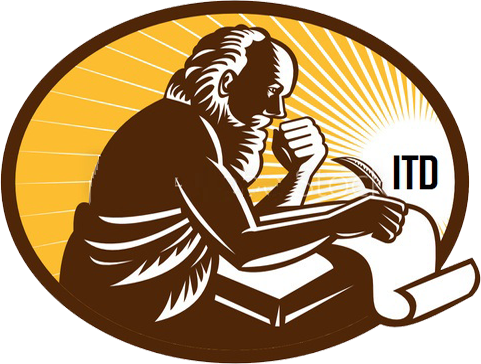
Legal Implications of Machine Translation and Solution
by Dr. Abu Mazhar Khalid Siddique - May 04, 2024
What is machine translation?
The fundamental concept behind machine translation is that it is a technological advancement in the field of linguistic communication. It makes it possible to convert text from one language to another in a seamless manner by utilizing complex computer algorithms. In order to decode and reassemble the semantic and syntactic structures of the source text into coherent output in the target language of choice, this cutting-edge approach makes use of the power of computational linguistics. Simply by entering text into specialized software or online platforms, users can designate both the source language and the destination language, and the system will automatically generate the information that has been translated.
An in-depth examination of the language patterns, grammatical rules, and contextual clues that are buried within the source text is the fundamental mechanism that underpins machine translation. Deciphering the meaning of individual words, phrases, and sentences is accomplished by sophisticated algorithms through the utilization of statistical models, neural networks, and deep learning approaches. These algorithms then recreate the meanings of these elements in the target language with a high degree of accuracy. Despite the fact that it is a difficult process, machine translation works toward the goal of producing output that is accurate, fluent, and coherent. This helps to facilitate communication between people of different cultures and the flow of information internationally.
Despite the fact that machine translation has made great progress in recent years, it is essential to acknowledge the limitations that are intrinsic to the technology. In order for automated systems to be successful, they must overcome considerable obstacles such as idiomatic idioms, cultural nuances, and language ambiguity. Additionally, the quality of translations that are generated by machines might differ depending on a variety of factors, including the language pair that is being translated, the domain specificity, and the availability of training data. The most successful use of machine translation is when it is combined with human expertise and oversight to ensure that the final result is accurate, nuanced, and sensitive to cultural norms. This is because machine translation is a great tool that helps facilitate multilingual communication and streamline translation workflows.
What is the process behind machine translation?
A number of different approaches, such as rule-based, statistical, and neural machine translation systems, are utilized in the process of machine translation. In order to translate text, rule-based systems rely on language rules and dictionaries. On the other hand, statistical models evaluate vast corpora of bilingual texts in order to provide translations based on likelihood. Neural machine translation is a relatively recent development that makes use of artificial neural networks to learn and generate translations by taking into consideration the context of full phrases. There are advantages and disadvantages associated with each method, with neural machine translation typically achieving higher levels of accuracy and fluency due to its capacity to recognize intricate linguistic patterns during translation. The quality of translation is improved over time as a result of these systems' ongoing evolution through the application of machine learning techniques.
Rule-based machine translation (RBMT)
A broad, preset collection of linguistic rules was utilized by rule-based machine translation, which was the oldest form of machine translation. These rules assisted the program in transferring the meaning of text from one language to another. In general, the translation was of poor quality, and it required the addition of languages manually in addition to a substantial amount of post-editing by humans.
Statistical machine translation (SMT).
A statistical model of the various interactions that exist between words, phrases, and sentences in a given text is constructed using statistical machine translation (MT). The model is applied to a second language in order to implement the conversion of those elements into the new language. This means that it is an improvement over rule-based MT, but it still has many of the same problems.
Neural machine translation (NMT)
In a manner analogous to the neural networks seen in the human brain, Neural MT use artificial intelligence to "learn" languages and continuously enhance its knowledge. The neural network of an MT engine is the one that is responsible for encoding and decoding the source text, as opposed to a set of predetermined rules being executed continuously.
Major machine translation providers
As of right now, the most prominent producers of machine translation technology, such as Google, Microsoft, or Amazon, are using a particular sort of neural machine translation as their preferred methodology. This is due to the fact that neural MT enables both more sophisticated translation and the continuous addition of language pairings. This expansion capability is made feasible by the fact that machine translation engines are able to learn and improve as they are utilized more frequently.
Generic machine translation engines
The most prominent providers of machine translation have all made the transition toward NMT, each in their own unique method. On the one hand, there is the strategy of utilizing a user-friendly and cost-free instrument in order to communicate with a more widespread audience. But on the other hand, certain engines also make it possible to modify the tool so that it meets the requirements of a more specific business. Take a look at some of the most common types of MT engines that are used for general purposes:
Google Translate
On the basis of its usage, the number of languages it supports, and its integration with search, Google Translate is regarded as one of the most prominent machine translation engines. When it came to mainstream translation services, Google Translate was one of the first to embrace NMT. Both business owners and language industry specialists have expressed interest in, and disagreement with, the accuracy of Google Translate. This has been a subject of debate.
Amazon Translate
Additionally, Amazon Translate is dependent on neural networks and is tightly connected with Amazon Web Services (AWS). Given the might of its parent corporation, it may not come as a surprise to many people that Amazon Translate has achieved remarkable achievements in such a short period of time since it was first introduced in 2017.
Microsoft Translator
Microsoft Translator is yet another neural engine that operates in the cloud. It is tightly connected with Microsoft Office and other Microsoft products, and it offers rapid access to translation capabilities within a document or other software.
DeepL
One of the companies that is only focused on the creation of a machine translation engine is the German-based firm that is responsible for the development of DeepL. On the basis of its own neural AI, it asserts that it is capable of producing output that is more nuanced and natural.
Systran Translate
For the first time in history, Systran was the first company to provide machine translation services for commercial purposes. Having been established in 1968, it continues to keep up with the most recent technological developments and has introduced some unique innovations of its own, the most recent of which is pure neural machine translation (PNMT).
Advantages of using machine translation
Prior to the integration of neural learning, machine translation (MT) was still primarily a specialized product that produced translations of diverse quality, often coming dangerously close to being unreadable or hilarious. Every one of those things has been significantly altered by the modern machine translation systems, which are becoming an increasingly vital component of corporate translation.
Increased velocity as well as volume
Machine learning is getting ever more efficient and faster as a result of continual advancements in both the algorithms and hardware technology that are used in machine learning. Not only does it have the ability to translate millions of words in a very short amount of time, but it also continues to improve as more information is translated.
When it comes to projects with a huge volume, MT not only manages the volume very quickly, but it also has the capability to link with other software platforms, such as content or translation management systems, in order to arrange the content. This makes it possible to keep the content's order and context intact even after it has been translated into a number of different languages.
Enhanced availability of access
It is possible to produce translations simultaneously to many target markets because the top translation translation companies offer up to one hundred languages, and some of them offer even more then that. Both the clients and the businesses benefit from this circumstance, making it a win-win situation.
Through the removal of language barriers and the enhancement of the consumer experience, MT has increased the accessibility of content, products, and services for prospective purchasers all over the world. At the same time, businesses have the potential to considerably increase their market share and enhance their bottom line if they spread their message to a larger audience.
decreased expenses
Machine translation services can reduce prices and delivery times, even while human translators are still post-editing the work. This is because of the combination of high-speed throughput and the capacity to select from existing language pairings covering hundreds of combinations. This allows machine translation services to cover a wide range of combinations.
To put it simply, MT is responsible for the initial heavy work by delivering translations that are fundamental but helpful. These fundamental versions are then refined by human translators in order to more accurately reflect the content's original intent and to guarantee that the content is appropriately localized for each location.
Our organization employs native-speaking translators who can provide certified translation services in any language. We provide translation services in English (Urdu), Arabic (Spanish), German (French), Persian (Iranian), French (Italian), Japanese (Korean), Russian, and any other Indian or local language. Expert proofreaders at our company will inspect the translation. We also provide a courier service to deliver completed documents to our clients.
- Also Read :- Journeyman certificate translations (JILT - Certified Translation Services)
- Also Read :- BIRTH CERTIFICATE TRANSLATION AND ITS SIGNIFICANCES
- Also Read :- Subtitle Translation Services
- Also Read :- PROCESS OF OBTAINING A DEATH CONFIRMATION LETTER FROM THE Indian Embassy IN Saudi Arabia.
- Also Read :- TRANSLATION SERVICES FOR TECHNOLOGY
- Also Read :- Multilingual SEO: How to Influence Worldwide Users through Artificial Search
- Also Read :- Translation and localization of games services
- Also Read :- Power of attorney translation (JILT - Certified Translation Services)
- Also Read :- Divorce settlement translations (JILT - Certified Translation Services)
- Also Read :- Police Clearance Certificate Translation Services
Search
Categories
Archives by Month
Popular Blog
QUICK TRANSLATION QUOTE
Need help with a translation?
Get in touch with us
Whether you have a specific project you want to discuss, need a translation quote or simply want to discuss your requirements, do not hesitate to get in touch with us.











Social Networks